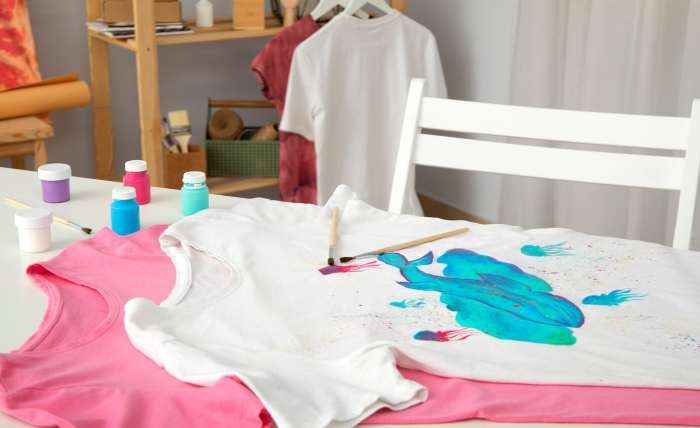
The custom t-shirt printing industry has grown into a thriving marketplace, offering endless opportunities for creative entrepreneurs. With personalized apparel becoming increasingly popular for businesses, events, and individuals, there’s never been a better time to dive into this lucrative field. Whether you’re starting from scratch or looking to optimize an existing business, understanding the key strategies behind success is essential. This guide will walk you through the secrets to building a prosperous custom t-shirt printing business.
Understanding the Custom T-Shirt Printing Market
The foundation of a successful custom t-shirt business begins with understanding your market. Custom t-shirts cater to a variety of audiences, from corporate clients needing branded uniforms to sports teams wanting matching jerseys. Identifying your niche early on allows you to tailor your products and marketing efforts for maximum impact.
Current trends show a significant demand for eco-friendly and sustainable apparel. People also seek unique, personalized designs that reflect their individuality or brand identity. By researching competitors and staying informed about market trends, you can uncover gaps in the industry and position your business to stand out.
Choosing the Right Printing Methods
The printing method you choose plays a major role in determining the quality, cost, and scalability of your business. Each technique has its advantages, and understanding them will help you make informed decisions.
- Screen Printing:
- Best for bulk orders.
- Produces vibrant, long-lasting prints.
- However, it requires setup time and is less cost-effective for smaller orders.
- Direct-to-Garment (DTG) Printing:
- Ideal for intricate designs and small batches.
- Prints directly onto the fabric, offering high-quality detail.
- Requires significant upfront investment in equipment.
- Direct-to-Film Printing:
- A newer, versatile option gaining traction.
- Allows designs to be printed onto film with a Prestige R2 DTF printer and transferred to fabric using heat.
- Works well on a variety of materials, including cotton and polyester.
- Balances cost-efficiency and quality, making it appealing for small and large orders alike.
- Heat Transfer Printing:
- Suitable for one-off designs and smaller runs.
- Offers flexibility but may not provide the durability of other methods.
By exploring these techniques and selecting the one that aligns with your goals and budget, you’ll set a strong foundation for your business.
Building a Brand That Stands Out
In a competitive market, a compelling brand identity is non-negotiable. Your brand is more than just a logo—it’s how your customers perceive your business.
Start by defining your mission and values. Are you focusing on sustainability? Is your goal to deliver fast, high-quality orders for event organizers? Whatever your focus, make it clear in your messaging. Invest in a professional website that showcases your designs, services, and customer reviews. Social media platforms like Instagram and Pinterest are especially effective for visual businesses like custom t-shirt printing. Use them to highlight your work, share behind-the-scenes content, and engage with your audience.
Sourcing High-Quality Materials and Equipment
The quality of your t-shirts and printing results will define your reputation. Customers expect garments that are not only visually appealing but also durable.
- T-Shirts: Source from suppliers offering a variety of sizes, colors, and fabric types. Cotton is a staple, but blends like polyester and tri-blends can appeal to different needs.
- Inks and Printing Supplies: Invest in high-quality inks and films that ensure vibrant and long-lasting designs.
- Printing Equipment: While cutting-edge machines like direct-to-garment printers or direct-to-film printers may require an upfront investment, they often pay off in efficiency and quality.
Maintaining consistent quality will help you retain customers and encourage word-of-mouth referrals.
Crafting a Marketing Strategy That Drives Sales
To thrive in the custom t-shirt printing business, you need an effective marketing strategy. Start with your website—it should be easy to navigate, optimized for mobile devices, and include an online ordering system.
Social media marketing is a powerful tool. Platforms like Facebook and Instagram allow you to run targeted ads and connect with your audience. Share customer stories, showcase your designs, and host giveaways to increase engagement. Additionally, partnering with influencers or local businesses can boost your visibility.
Seasonal promotions are another way to attract new customers. Offer discounts for bulk orders during holidays or create limited-edition designs for events.
Managing Operations for Long-Term Success
Smooth operations are critical for growth. Efficient order management and fulfillment processes can prevent delays and keep customers satisfied. Use tools like customer relationship management (CRM) software to track orders, communicate with clients, and manage inventory.
Automation is another valuable asset. For instance, automating the printing process with modern methods like direct-to-film printing can save time and reduce errors. As your business scales, consider outsourcing certain tasks, like shipping, to focus on core activities.
Embracing Sustainability and Ethical Practices
Modern consumers are increasingly concerned with sustainability. By incorporating eco-friendly practices into your business, you can attract a broader audience while doing your part for the environment.
Use organic or recycled materials for your t-shirts, and opt for water-based inks that have a lower environmental impact. Highlight your sustainable practices on your website and marketing materials to appeal to eco-conscious customers.
Tracking Metrics and Adjusting Strategies
To ensure long-term success, track your performance and adapt accordingly. Key metrics include sales growth, customer retention rates, and average order value. Use analytics tools to understand what’s working and where you can improve.
Customer feedback is invaluable. Encourage reviews and take constructive criticism to heart. Staying adaptable will help you navigate changes in the industry and meet evolving customer needs.
Conclusion
Starting and growing a custom t-shirt printing business requires a mix of creativity, strategy, and dedication. By understanding your market, choosing the right printing methods like direct-to-film printing, and focusing on quality and branding, you can create a business that not only prospers but also stands the test of time.
Remember, success doesn’t happen overnight. It’s the result of consistent effort, innovation, and a deep understanding of your customers’ needs. So, take the first step today—your custom t-shirt printing empire awaits!



